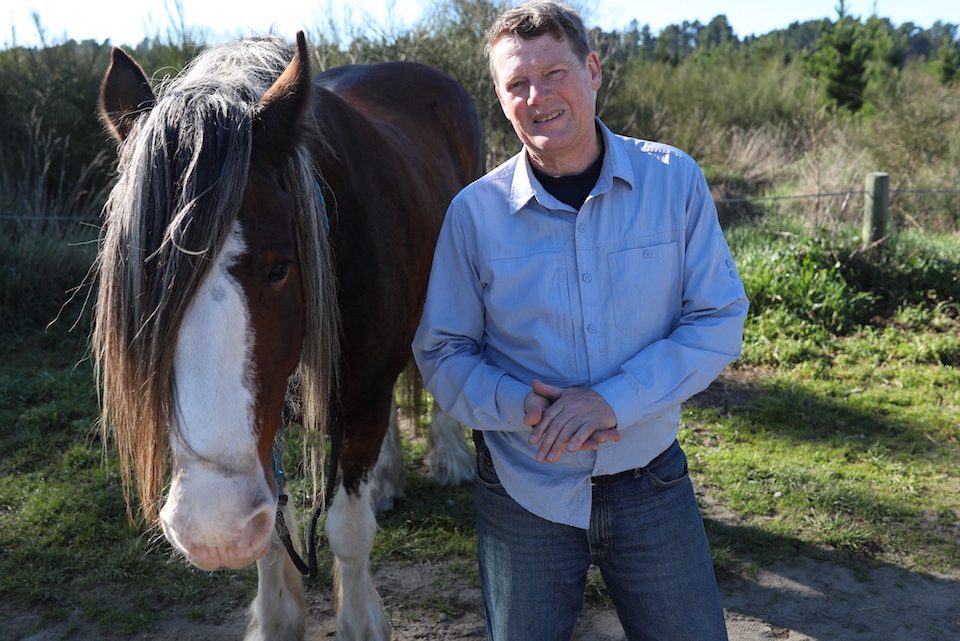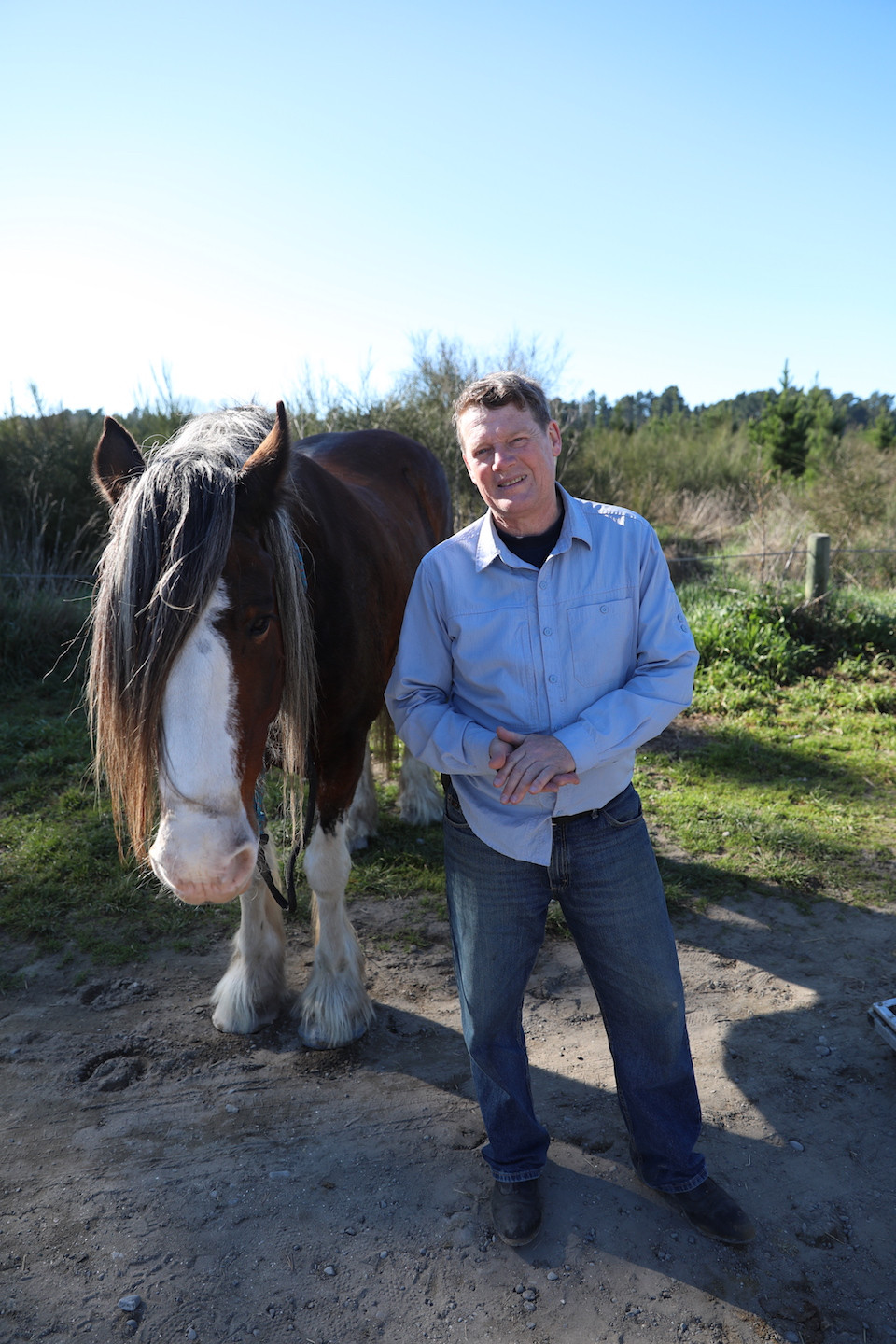
This New Zealander is Spending His Final Days Fighting for the Right to Die
September 16, 2020 Off By Gavin ButlerStuart Armstrong knows exactly how he wants to die. On sleepless nights, lying awake and staring into the early morning darkness, he’s planned out the entire thing.
“How I imagine it is being on horseback,” he says. “On the beach, on my beautiful Clydesdale, with my wife on a horse beside me [and] friends, family, everyone around after a big bonfire party and a whole lot of music playing.”
The 60-year-old father of two, who lives in New Zealand and was diagnosed with terminal prostate cancer in 2015, might not get the final say in the matter. As the country goes to the polls for the national election in October, the body politic will be asked to cast their vote on a potentially death-changing bill: the End of Life Choice Act, or the “euthanasia referendum”.
It is the first time a country has ever put the matter to a public vote.

If passed, the law will give terminally ill people like Armstrong the opportunity to undergo assisted dying in the last six months of their lives, by having a medical professional prescribe them medication. It will be stamped into national legislation—the culmination of a five-year struggle to get the bill past parliament and to the stage of a nationwide plebiscite—and come into effect 12 months after the results are announced.
But Armstrong, who admits he’s “already done better than average against this bloody thing”, is running out of time. If the bill doesn’t pass, then assisted dying will continue to be considered "aiding and abetting suicide" under Section 179 of the New Zealand Crimes Act—and he, along with every other terminally ill person in the country, will be expected to live out his final days in a palliative care ward.
That would be, in his estimation, the worst-case scenario.
“I’ve thought a lot about how I’m going to go, and sitting on some shitty hospital bed, looking up at the ceiling while they up the intake of morphine—that is not [it],” he tells VICE News from his home in Lincoln, just outside Christchurch.
If the euthanasia bill doesn’t get enough votes to pass, he says, “then I don’t get to do it. And if I don’t get to do it I’m looking at the”—he makes the sound of a gun cocking, turns a finger on himself— “boom, or the ride-[my-motorbike]-off-a-cliff type scenario, instead of the lovely farewell with my family on my terms. So this has become a real, all-encompassing fight for me.”
Right to die
Whether or not a person should be allowed to seek the assistance of a medical professional in ending their own life is a matter that has been hotly debated in New Zealand for the past quarter-century. Two so-called “Death with Dignity Bills” proposing the legalisation of voluntary euthanasia were lodged in 1995 and 2003, followed by the first iteration of the End of Life Choice Bill in 2012. All three failed to make it past a first reading.
Then, in October 2015, David Seymour—the sole MP for the libertarian ACT Party—confirmed that he would bring the End of Life Choice Bill back before the Parliament. The bill passed its first reading 76 votes to 44 in December 2017; its second reading 70 to 50 in June 2019; and its third reading 69 to 51 in November 2019, whereupon it was agreed that the final decision would be put to the public in a binding referendum on election day, October 17, 2020.
Until the nation has their say, though, it remains an offence to "incite, procure or counsel" or "aid and abet" someone to end their own life in New Zealand, regardless of whether or not a suicide attempt is actually made.
Speaking to VICE News, David Seymour defined the End of Life Choice Act as a carefully regulated “exemption” from these laws; “a very narrow and very tightly safeguarded carve-out of that usual sanction in the Crimes Act.”
Under the new legislation, anyone hoping to undergo assisted dying would have to be over 18; they must be a New Zealand citizen or permanent resident, have a terminal illness likely to end their life within six months, and be at an advanced state of irreversible decline in physical capability. They must be of a sound mind according to a specified psychological test, and—crucially—believe in their own view that they are unable to alleviate their suffering in any other way. Patients will not be able to access euthanasia for reasons of age, disability or mental illness.
“If you check that a person fits that,” says Seymour, “then with some other procedures and an independent doctor verifying it, a doctor can help you end your life without the usual criminal sanctions against aiding and abetting suicide.”
Although physician-assisted dying is legal in six other countries—including the Netherlands, Belgium, Colombia and Canada—New Zealand is the first nation to let its people, rather than its politicians, make the call on whether it should be decriminalised. Recent polling suggests between 60 and 70 percent of Kiwis support the change in legislation.
But the proposition has not been without its detractors.
There is a cohort of politicians, medical professionals and religious figures who staunchly oppose the End of Life Choice Act, and have fought tooth and nail to try and prevent it from getting this far. Opponents of the bill broadly argue that to legalise assisted dying would be to contravene the sanctity of life and empower medical professionals to make decisions that are beyond their remit—a dangerous precedent, as they see it, particularly for society’s most vulnerable such as the elderly and the disabled.
Richard Huxtable, a Professor of Medical Ethics and Law at the University of Bristol, explained to VICE News over email that “ethically, those who are opposed to allowing assisted dying tend to argue that life matters, that healthcare professionals should save and improve lives, not end them, and that changing the law might have disastrous consequences.
“The last argument,” he points out, “essentially claims that legalising assisted dying risks entering onto a dangerously slippery slope.”
The European example
Anyone interested in weighing the “slippery slope” argument might look to case studies overseas, in jurisdictions where euthanasia or assisted dying (the former being when the doctor administers the fatal medication; the latter when the patient takes it themselves) have already been decriminalised.
What the data shows is that the number of people voluntarily ending their life with medical assistance in these countries has steadily—and at times significantly—increased.
In Switzerland, where assisted dying for “non-selfish” reasons has been legal since 1941, the number of people undergoing the procedure rose more than fourfold in a little over a decade, from 187 in 2003 to 965 in 2015. Similarly, Dutch authorities recorded a threefold rise in euthanasia and assisted dying between 2001, when the Netherlands officially decriminalised the act, and 2016.
In 2017, 4.4 percent of the Netherlands’ total number of deaths were from euthanasia or assisted dying—up from 1.2 percent in 2003—and the largest proportion of those cases involved people with cancer.
The upward trend is hardly surprising: one wouldn’t expect a behaviour to become less common after it’s been decriminalised. And yet meanwhile, in Switzerland, overall suicide rates have generally decreased from 1981 onwards—most notably since 2003 when the uptick in euthanasia began.
This means that as rates of assisted dying went up, rates of non-assisted suicide went down.
Where the Netherlands has drawn criticism from “slippery slope” doomsayers is in relation to the seemingly elastic nature of its regulations, which have been stretched over the years to encompass ever-looser definitions of who should and shouldn’t qualify for physician-assisted dying.
“In the 1970s, the Dutch [assisted dying] policy focused on those who were incurably ill and suffering; by the 1990s, those enduring psychiatric suffering were included; then—by the turn of the century—those who were ‘tired of life’ and even critically ill infants,” said Professor Huxtable.
He also noted, however, that the data is “hotly contested”—and Agnes van der Heide, professor of decision-making and care at the end of life at the Erasmus University Medical Center in Rotterdam, explained that it only tells one part of the story.
While the number of people undergoing physician-assisted dying in the Netherlands is indeed increasing, said Professor van der Heide, being tired of life without an underlying medical condition is not accepted as a valid reason.
“If people who state they are tired of life receive physician-assisted dying, they virtually always also have a severe medical condition,” she told VICE News.
She also pointed out that multiple evaluation studies have shown the Netherlands’ assisted dying laws to be successful, with breaches of criteria identified in less than one percent of cases, and more than 80 percent of physicians and the general public expressing ongoing support for the legislation.
The level of support from New Zealand’s medical professionals, on the other hand, is harder to gauge.
In June 2019, 1,061 of the country’s 17,000 registered doctors (about 6 percent) signed an open letter saying they wanted no part in assisted dying. Research further indicated that those most opposed to the change in legislation tended to be palliative care specialists, many of whom argue that the country’s end-of-life care is already sufficient for alleviating the suffering of people with terminal illnesses.
Armstrong disagrees, and says he’s frustrated by the dishonest, fear mongering emotional tactics that have been deployed by a disproportionately loud minority who want to scuttle the bill—most of whom, he points out, are not terminally ill.
“Let's address the elephant in the room with this whole thing, shall we? It's called the End of Life Choice. These people that are so fervently against it—who believe in what they call the sanctity of life and their religious beliefs … they don't have to use it,” he says.
“Get out of my life; I don't want your views impacting on whether I live or die. This is not just a cup of coffee political debate about an interesting issue; this is life and death for me. So … unless you've had cancer, don't you try and tell me how to handle this … It's my situation and my choice, and my choice sure as hell ain’t gonna affect you.”
A dignified death
As Armstrong sees it, it’s a mistake to even frame the euthanasia debate as a two-sided argument.
“It's important to counteract these fables that are being thrown around in the name of opposing the bill as if … there's pluses and minuses to this,” he says. “No there’s not.”
“If you don't like it, don't use it. There’s no negatives. No one extra is going to die because of this bill; just a whole lot of people aren't going to suffer miserably doing it.”
Armstrong, who’s become a strident defender of the End of Life Choice Act in recent years and enlisted as an ACT member for his local electorate of Selwyn, took up the mantle as a euthanasia advocate around the same time he started thinking about how he wanted his own life to end: when he was told the cancer that had started in his prostate was metastasising and spreading into his skeleton.
“I’m pretty sure everyone knows that bone cancer is gonna be painful,” he says. “I started to think ‘well it’s gonna be really gnarly’. I’d watched a relative die from cancer and it didn’t look very nice … Stuff that. I thought ‘well if it’s gonna be five years, I’m probably at three years now, I’ve got to start thinking about how this is all going to work out.’”
It’s now been almost six years since Armstrong’s first diagnosis—longer than the average life expectancy for someone with his condition—and he’s using what time he has left to fight for the laws to change, by speaking publicly about his own experience and beliefs. The freedom to choose how he dies has become a matter of self-determination for him: “a big ‘fuck you’” to a disease that’s already taken so much, and a way to reclaim some control over what remains of his life, including its end.
“The most experienced and knowledgeable palliative care people have admitted openly that there is a portion of people they can't really mitigate the suffering of at the end of their life,” he says. “There are cancers, there are conditions that give you a bloody miserable ending, and they can't mitigate the suffering of those people currently with what they have.”
“A dignified death is not available to everybody here. And it should be, shouldn't it? My approach is you can't help everybody, so give us this law to make our passing what it should be. And that's peaceful and dignified.”
Follow Gavin on Twitter

